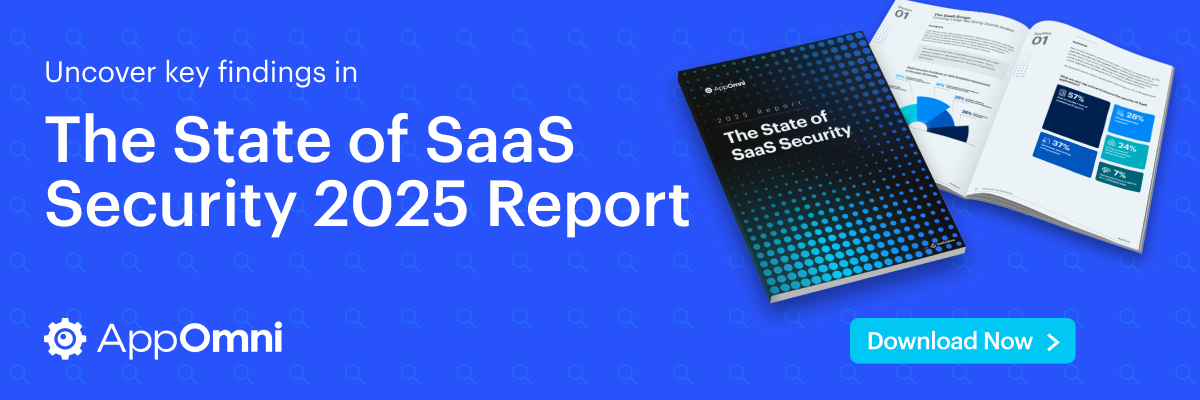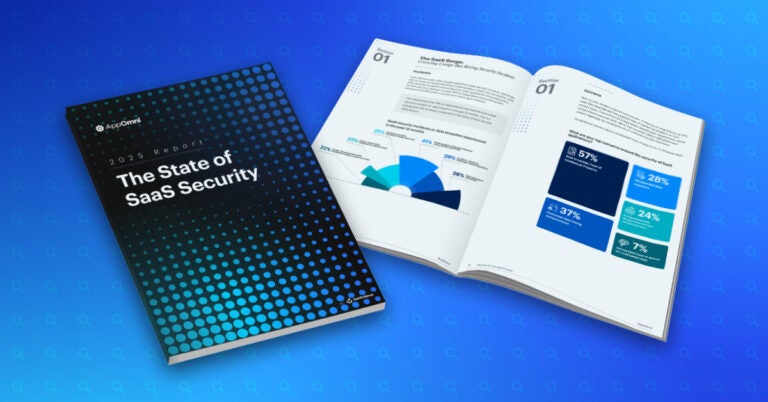Most security and IT leaders will tell you: “We have visibility into our SaaS environments.” Dashboards, audit logs, alerts—they’re all at your fingertips. So then why are three out of four organizations still experiencing SaaS security incidents, despite all that data? Our latest data exposes a harsh reality: Seeing risk is not the same as securing it.
High SaaS visibility, when not paired with enforcement, accountability, and continuous validation, can lull organizations into a dangerous sense of control. As SaaS ecosystems grow more complex, organizations need to move beyond dashboards to true, operational SaaS security.
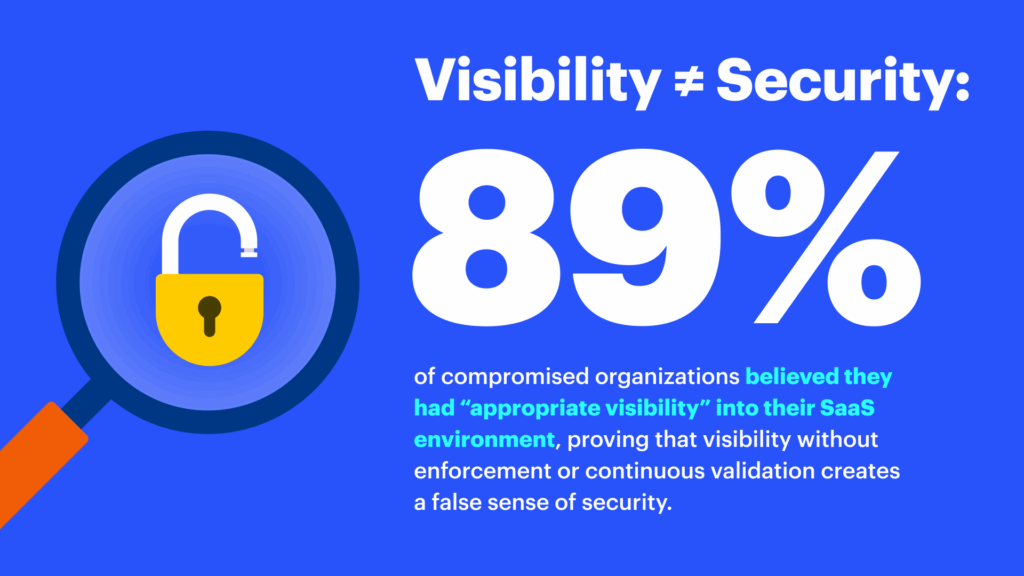
Visibility in SaaS security: What organizations think it means
According to the AppOmni State of SaaS Security 2025 Report, 89% of organizations that suffered a breach or SaaS security incident believed they had “appropriate visibility” into their SaaS environment at the time of the incident. This confidence is understandable when you consider that most of today’s SaaS platforms provide robust reporting, access logs, and compliance dashboards.
But the data shows a clear disconnect: 75% of organizations still experienced a SaaS-related security incident in the last year. That number is also increasing: Companies saw a sharp 33% increase in SaaS-related incidents year-over-year.
➡️ Want to explore why confidence doesn’t always equal security? Read our in-depth analysis of the SaaS security confidence gap here.
At the end of the day, SaaS visibility tools surface risk, but they don’t eliminate it. Unless there’s a bridge between what’s visible and what’s actually managed and enforced, organizations are stuck.
Security teams are drowning without knowing why
You might know the feeling: Each morning, you are greeted by a sea of dashboards. Dozens of tabs, blinking alerts, graphs trending up and down, endless logs. You should feel on top of things. After all, everything is “visible.” But beneath that sense of digital safety, a quiet frustration grows: Are you truly secure, or just surrounded by data?
The more information you have, the more you realize how quickly risk can hide in plain sight. Teams are exhausted, toggling between interfaces, chasing alerts, and wrestling with the uneasy sense that visibility is not translating into real protection. This is what we call the SaaS visibility trap: When seeing risk becomes a substitute for actually securing it.
The illusion of oversight: When seeing isn’t enough
What’s fueling this illusion and this frustration? The report highlights several contributors:
- Dashboards without action: Security teams often rely on dashboards for a sense of control. But dashboards only show what’s being collected, not what’s being actively managed, validated, or remediated.
- Periodic vs. continuous monitoring: Only 43% of organizations have implemented continuous or near real-time oversight. Most still rely on periodic audits or ad hoc reviews. In SaaS, where permissions, integrations, and user roles change constantly, risk can emerge and disappear between reviews, often undetected.
- Overconfidence in vendor security: 53% of respondents who felt “secure” said their confidence stemmed from trust in their SaaS vendor. However, this trust doesn’t always translate to proactive SaaS risk management on the customer’s side.
Common SaaS visibility trap pitfalls and consequences
The first thing that happens is the toll it takes on the immediate security team.
- Alert fatigue: Teams are overwhelmed by low-value alerts and miss the real risks.
- Surface-level data: Visibility into logs and events doesn’t always mean clarity about why a risk matters or how to prioritize it.
- Fragmented ownership: When SaaS apps are managed by different teams, no single group has end-to-end accountability for acting on what’s visible.
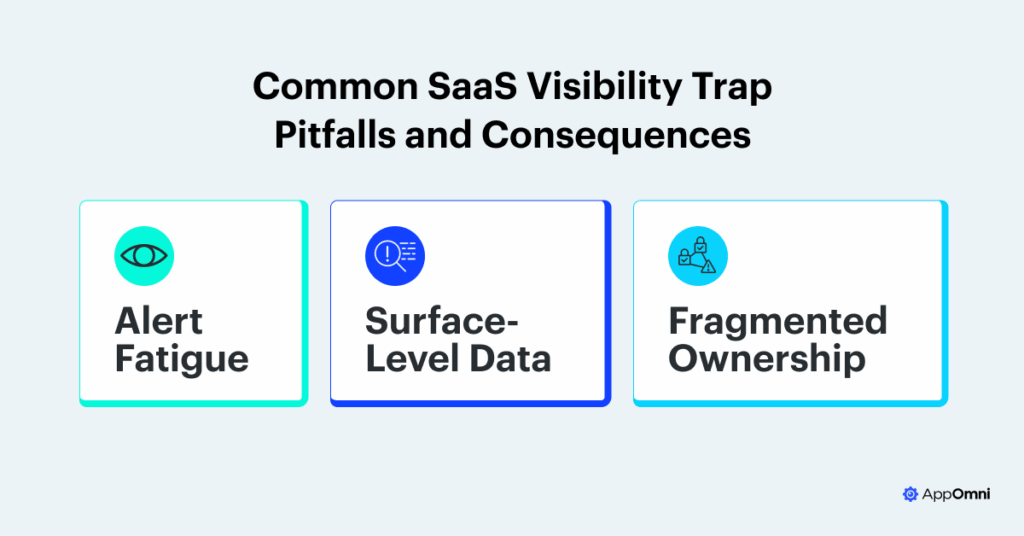
Then, it impacts the rest of your organization. The consequences are significant and recurring:
- Misconfigurations persist: 29% of incidents were due to misconfigurations, often left unresolved because teams saw them but lacked clear remediation plans.
- Over-permissioned users: 41% of incidents traced back to permission issues—a classic example of risk being visible in audit logs, but not being acted upon.
- Data exposure and compliance risks: Even organizations with strong visibility faced incidents involving sensitive data, often due to shadow SaaS, unmonitored integrations, or policy drift.
- Regulatory and financial fallout: Fines, reputational harm, and loss of customer trust follow when visible risks become actual breaches.
On top of this, the average cost of a data breach is staggering: IBM reported that an average data breach costs $4.45 million, and even small-scale incidents can cost $165 per record.
Do you want to take that risk?
Why SaaS security needs to be more than visibility
The data is clear: Visibility is only step one. A good step, yes. But not the only step.
True SaaS security requires a much deeper, more active approach. First, it’s about continuous validation and relying on real-time checks that do more than just trigger alerts. These checks must actively validate your security posture, catch configuration drift as it happens, and highlight the issues that genuinely matter, rather than adding to the noise. Just as important is clear ownership and response. Every risk that becomes visible through dashboards or logs must have a clearly defined owner and a direct path to remediation; when responsibility is vague or fragmented, risks linger unresolved.
Context and prioritization are also essential. Not every alert is a crisis, and with the sheer volume of notifications in most SaaS environments, security teams can’t afford to treat them all the same. Instead, organizations must focus on what’s truly critical—especially since the vast majority of sensitive data typically resides within a small fraction of SaaS applications. Finally, automated enforcement is key to closing the gap between seeing risk and actually reducing it. Manual processes simply can’t keep up with the pace and complexity of SaaS changes, so automated policy enforcement and remediation are necessary to ensure that risks are addressed promptly, not just observed.
How to escape the SaaS visibility trap
What leading organizations do differently is not just a matter of technology, but of approach and discipline. Instead of relying on periodic, point-in-time audits, they make continuous monitoring the foundation of their SaaS security programs—catching risks as they emerge, not weeks or months after the fact. They also integrate automated policy enforcement, allowing them to rapidly remediate misconfigurations and permissions issues before they can escalate into actual incidents.
Responsibility for SaaS risk is assigned explicitly, with clear accountability mapped to specific teams or roles, rather than leaving it as a vague, “shared” obligation that too easily falls through the cracks. And crucially, these organizations shift their focus away from simply collecting alerts and logs, choosing instead to invest in understanding the context of risk and measuring outcomes. This means they act on what truly matters for their data, users, and business (not just what shows up in a dashboard).
What you can do
If your team is spending more time looking at dashboards than actually reducing risk, you may be stuck in the visibility trap. Here’s how to get out.
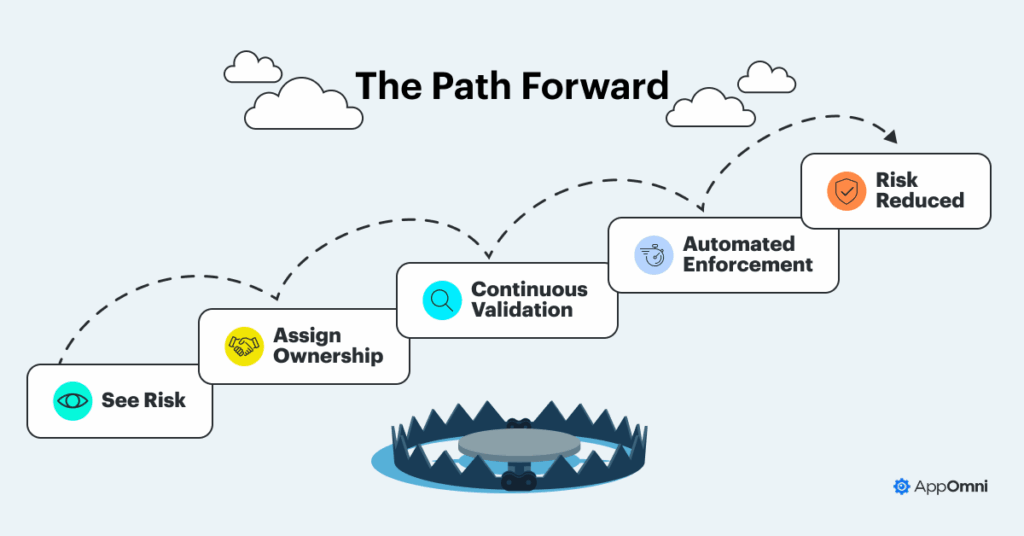
- See risk clearly: Gain real-time, comprehensive visibility into SaaS risks, misconfigurations, and access issues so nothing falls through the cracks.
- Assign ownership: Clarify who is responsible for SaaS security in every application and integration. Assign clear ownership to ensure accountability and action.
- Validate continuously: Move beyond point-in-time audits. Continuously validate security controls and posture across your SaaS environment to quickly detect drift and new risks.
- Enforce automatically: Automate policy enforcement and alerting wherever possible to streamline response, ensure best practices are followed, and minimize manual effort.
- Reduce risk and effort: Free your team from low-value tasks. Focus remediation on what matters most: Reducing your SaaS attack surface and demonstrating measurable risk reduction across your most critical applications.
Move beyond visibility with continuous SaaS validation
Dashboards don’t secure SaaS environments—people, processes, and the right tools do. The State of SaaS Security 2025 Report is a call to action for every organization: Move beyond the comfort of “visibility” and commit to operational, continuous, and accountable SaaS security.
Ready to learn more about closing the gap between seeing and securing SaaS risk? Download the full 2025 State of SaaS Security Report for deeper insights and practical steps.
